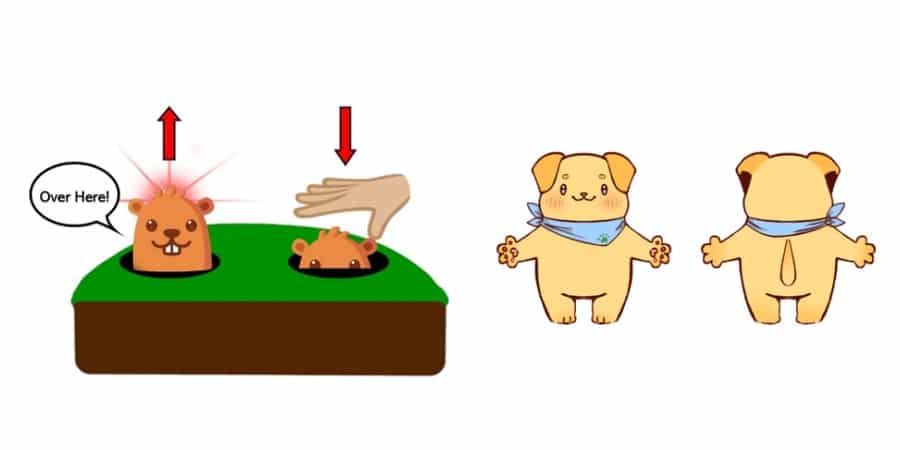
Play is an especially important factor for promoting early childhood development of various aspects, including physical, mental, and emotional development. Toys provide a means for children to be able to explore and interact with the world around them within a safe space. However, children with neuromotor disabilities such as cerebral palsy may find it difficult to manipulate and interact with majority of currently existing toys due to their physical limitations. Therefore, this project is aimed to develop toys that are safe, accessible, and encourage playfulness especially for children with disabilities such as cerebral palsy.
Timothy Carr and Liliane Angelina are Honours Students studying biomedical engineering at the University of Sydney. They are currently undergoing their honours project under the supervision of Dr Petra Karlsson and Professor Alistair McEwan. Tim is redesigning the whack-a-mole toy to provide kids with an easy to use interactive toy, while Liliane is using face and hand tracking for children to interact with a digital character. Read more on their projects below.
Tim Carr
Remember whack-a-mole? A fun game where the player has to ‘whack’ a number of moles with a mallet as they pop up and down from an arcade machine. Many people may take a simple game like this for granted, however, to operate the toy, the player requires good grasping ability to hold onto the mallet, quick reactions to hit the moles on time and enough strength to swing the mallet. This makes it unsuitable for children with disabilities such as cerebral palsy.
For this project, an accommodated whack-a-mole toy is being designed to provide these kids with an easy-to-use toy that accommodates limitations in both gross motor function and fine motor control. The toy establishes a cause and effect relationship, whereby when the user presses down on one mole, another mole then pops up in a different location. Additionally, an LED light will flash and a recorded audio snippet will play indicating to the user that another mole has emerged. These lights and sounds aim to accommodate children with vision and hearing problems.
This toy is currently in development, parts are being modelled in solid works and will be 3D printed. Additionally, an electronic circuit is being prototyped so to provide the toy with lights and sounds. It is currently planned that the toy will be ready to tested with children sometime in February/March 2023. Remember whack-a-mole? A fun game where the player has to ‘whack’ a number of moles with a mallet as they pop up and down from an arcade machine. Many people may take a simple game like this for granted, however, to operate the toy, the player requires good grasping ability to hold onto the mallet, quick reactions to hit the moles on time and enough strength to swing the mallet. This makes it unsuitable for children with disabilities such as cerebral palsy.
For this project, an accommodated whack-a-mole toy is being designed to provide these kids with an easy-to-use toy that accommodates limitations in both gross motor function and fine motor control. The toy establishes a cause and effect relationship, whereby when the user presses down on one mole, another mole then pops up in a different location. Additionally, an LED light will flash and a recorded audio snippet will play indicating to the user that another mole has emerged. These lights and sounds aim to accommodate children with vision and hearing problems.
This toy is currently in development, parts are being modelled in solid works and will be 3D printed. Additionally, an electronic circuit is being prototyped so to provide the toy with lights and sounds. It is currently planned that the toy will be ready to tested with children sometime in February/March 2023.
Whack-a-mole toy, with light and sound circuit prototype for the toy.
Liliane Angelina
This project takes a digital approach, aimed to improve accessibility of toys for a wider spectrum of cerebral palsy. The toy utilizes face and hand tracking as a means to interact with the toy, this provides accessibility for children with higher severity of cerebral palsy to play and interact with toys. The toy is designed to have 3d graphics and with 3 modes described below:
1. Home: A character appears on the screen and face tracking is applied to mirror the head movements and expressions of the user. This is a simple and intuitive mode for children to play around and experiment with different expressions, and face and neck muscle movement.
2. Interactive sensory: A visual stimulus such as bubbles will appear on the screen along with an auditory stimulus of constant soothing background music. This is made interactive by utilizing hand tracking, whenever the user moves their hand to touch a bubble, the bubble pops and disappears from the screen. In addition, an auditory stimulus of a “pop” sound is triggered whenever a bubble is touched. This mode is designed to be as simple and intuitive as possible to accommodate for the 6 to 12 months age range.
3. Exploration and daily activities: A home environment such as a kitchen will appear on the screen, hand tracking is used in this mode to move a cursor and to select objects. In this mode children are able to explore the digital environment, and interact with and learn about various items. In addition, 3 to 4 daily activities are set within the environment for the children to look for. These are small mini-games for the child to do that involves exercising gross motor function. A reward system is set in place once the child completes all daily mini-games.
This toy is currently in development, characters, items and environments are all modelled in 3D with Blender, and Unity is used to develop the game. It is planned that the prototype will be ready to be tested with children around February/March 2023.
Design of a character to interact with children through face and hand tracking.